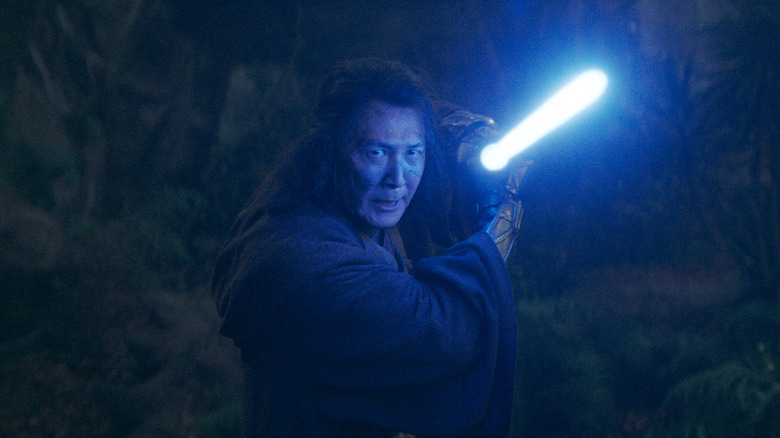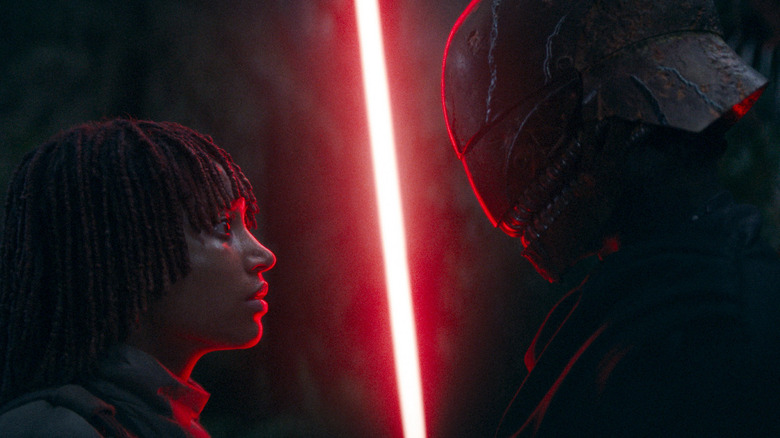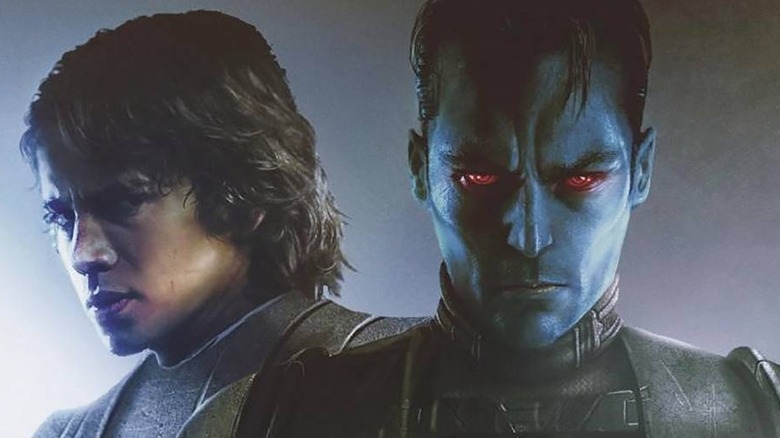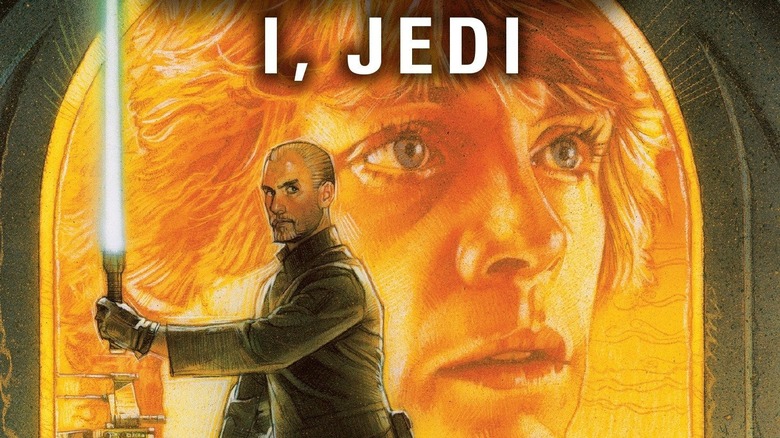Why Do The Jedi Lightsabers Short Out In The Acolyte Episode 5? Cortosis Explained
This article contains spoilers for "Star Wars: The Acolyte" episode 5, "Night."
Picking up moments after last week's episode, the fifth episode of "Star Wars: The Acolyte" begins with the slaughter of many Jedi at the hands of the dark warrior who arrived to stop them. This helmeted stranger begins dispatching them handily, but something curious happens. As the Jedi lightsabers hit the gauntlets or helmet of the alleged Sith, their blades short out for a moment. This gives their opponent a distinct advantage, especially against so many saber-wielding opponents.
At first, there might be some confusion about the mysterious metal and some might even assume that it's Mandalorian beskar, which we've seen deflect plenty of lightsabers in "The Mandalorian." However, the metallic element here is totally different and has a long history in "Star Wars."
The material in question is called Cortosis, and it's been around in "Star Wars" in some form or another for the last 25 years thanks to some of the original writers of the "Star Wars" Expanded Universe.
What is Cortosis?
Cortosis is an incredibly rare metal that can be found in only two known places in the "Star Wars" galaxy. It's dense and conductive in such a way that it can absorb blaster bolts and feed energy back into a lightsaber just enough to short it out. It doesn't short the saber out for long, but long enough for someone with nefarious purposes to press an advantage with their attack. Some descriptions refer to it as fibrous, which means that it can be woven into other metals, while others refer to it as brittle.
In this fifth episode of "The Acolyte," the mysterious, self-proclaimed Sith warrior uses it to vanquish many foes, but it's also used against him by Yord (Charlie Barnett), who blocks a saber with the battered Sith helmet. It's important to note that brittleness the lore mentions for the ore, which makes sense for how it was portrayed in the episode. Jecki (Dafne Keen) was able to break the helmet in two and unmask their dark side opponent, which spelled certain doom for everyone there in order to keep the secret of the Sith.
In the Star Wars canon
In the current canon, Cortosis has made a few appearances. It was first mentioned in John Jackson Miller's "Star Wars Rebels" prequel book "A New Dawn." In it, the cyborg bean counter Count Vidian had it woven into his armor and was able to stop Kanan Jarrus' lightsaber.
Perhaps the biggest previous use of Cortosis came in Timothy Zahn's novel "Thrawn: Alliances." In that book, the Separatist Alliance finds a mine full of Cortosis and plan to cultivate it in order to make a series of Battle Droids that would be unstoppable to the Jedi and their lightsabers. Fortunately, Jedi Knight Anakin Skywalker and Thrawn, then from the Chiss Ascendency, were able to stop them. One can only shudder to think what an army of Cortosis armored B2 Super Battle Droids would do to an army of Jedi trying to cut them down.
The results would look a lot like the dead Jedi in "The Acolyte" episode 5.
Cortosis has appeared in "Star Wars" comic books as well, with one blade in particular playing a part in a great story featuring Doctor Aphra. However, it's never appeared in live-action before, leaving "The Acolyte" to take that honor.
Star Wars Legends origins
The first appearance of Cortosis in the "Star Wars" universe goes back to the 1998 Legends book "I, Jedi," written by New York Times bestseller Michael A. Stackpole. Although, if you ask Stackpole, he didn't dream up the idea for Cortosis and offers all of the credit to his friend and colleague, Timothy Zahn.
"The way Cortosis ore ended up in 'I, Jedi' was fairly simple," Stackpole once told me. "Timothy Zahn invented it for his books and we talked almost every day while I was writing 'I, Jedi.' He told me about it, and I said I knew a place to use it. So his invention ends up in my book first, but that was pure Tim Zahn."
Talking to Stackpole further, he explained that it was something Zahn needed for his then-upcoming book "Vision of the Future" — another yarn featuring the legacy of Thrawn, though not Thrawn himself. So, the pair of them decided to slip it into the earlier book so it didn't feel like it came out of nowhere in the canon. "I, Jedi" was published in May of that year, with "Vision of the Future" following in September, creating a continuity between them that the writers felt was seamless.
Cortosis was used in many "Star Wars" projects from that point forward. And while its rarity was always maintained in the universe, it was used whenever the plot required it across comics, books, and other properties.
New episodes of "Star Wars: The Acolyte" premiere Tuesdays at 9pm EST, only on Disney+.



